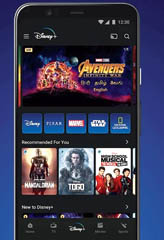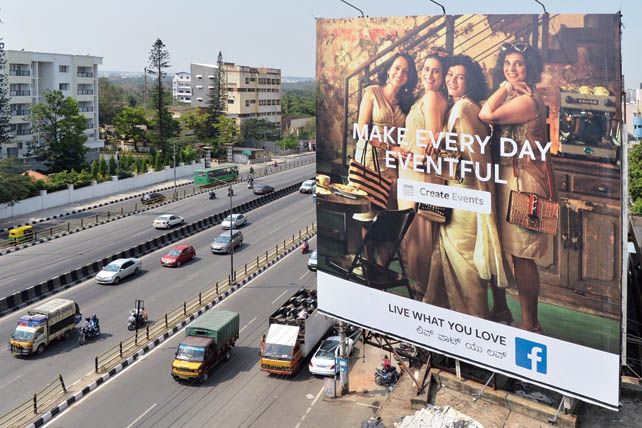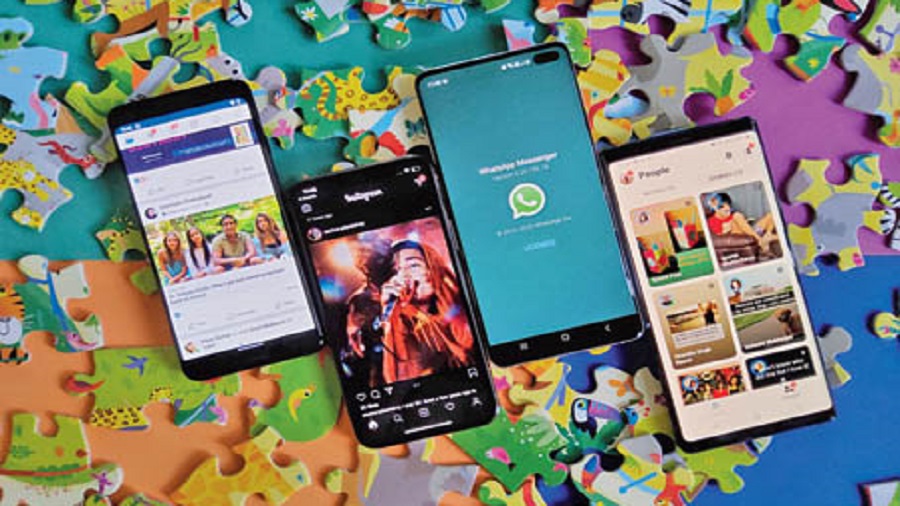He grew up in a small town in Kochi where the karimeen fish leaps from the water into the frying pan. Life was restricted to a few square kilometers. The understanding of a close-knit community came to him much later when at age 18 he boarded an airplane for the first time and headed to Singapore for college. One road let to another, taking him all over the world. Among the many milestones he has lapped up, a major one came in 2015 as the CEO of Hotstar, a service that changed the face of video streaming in India. Just when we started wondering the card Ajit Mohan would deal next, he moved to Facebook in January 2019. He is currently the managing director and vice-president for Facebook India.
Facebook India has, of course, been in the news for weeks for picking up 9.99 per cent in Reliance Jio (for $5.7 billion or Rs 43,574 crore). And then the company decided to push a new feature that’s being globally talked about — Instagram Reels. A few days ago, we had an opportunity to have a long chat with Ajit Mohan, which started with karimeen and hilsa, rounding off with the opportunities India has to offer. Excerpts...
The talks with Reliance must have been on for a long time but what did you see in Reliance Jio that interested you?
One, Jio did stand out as a company which has played an instrumental role in setting the foundation of the digital economy of India. If you circle back to 2013-14, there were less than 50 million people who had access to 4G in the country; data was pretty expensive. It used to cost around $8 to stream an hour of video. Today the number is almost close to zero, India in fact is amongst the countries with lowest cost of data. And there are more than 500 million people who have access to high-quality mobile broadband.

Facebook as a company is a family of apps.... For me the excitement is not just about numbers on Instagram. For us, the real question is how we can accelerate the moment the big global star would come out of India; a big global star who sets the tone for global culture. And hopefully it would be a creator whom none of us have heard of at the moment. That’s what we are rooting for — Ajit Mohan, managing director and vice-president, Facebook India Sourced by the Telegraph
What Jio has managed to build out is foundational in nature. And, both Facebook and Jio are united in their mission to make Internet more accessible and providing powerful online tools that will have a positive impact for both people and businesses.
Now, let this converge with the lens with which Facebook views India — we are a company that is really leaning into India. We’re looking at India’s role in the strong world and not just from an Internet point of view but from a broader lens. I think there is a belief that the arc of India is not only exciting but pretty critical to everything that would happen around the world in the next 15-20 years. And in that context, we saw the work that Jio has done; it’s been quite substantial.
There was also this excitement about making an investment in a company that has a credible record and which continues to expand access, continues to provide a platform on which products and services could be built.
What is going to be the focus of your collaboration with Jio?
As we engaged in the conversation, we quickly converged on the fact that there was at least one particular area where the two companies could work together to make a substantial impact, for each other but, more importantly, for the Internet economy in India… and that is about small businesses. Again, it’s quite important to realise that now 500-550 million have good access to broadband and almost all of it on mobile. The number will keep going up — in the next five years or so we will expect nearly a billion people to be on Internet.
But if you think of it, the sparks start flying when the small businesses benefit from the power of the Internet. Most of the country economically is centred on 60 million or so small businesses. They are the heart of the GDP and provide jobs to millions of people every year. But they are not digitised.
If you look at the first wave of the Indian Internet economy, work has happened on the top end of the funnel. Even if you look at commerce and shopping, it’s really catering to the higher-income households. But that’s not where the country lives.
For us, the opportunity in this was that given there are 550 million people on the Internet, and the numbers are going up, how do we help those 60 million small businesses — at the heart of the Indian economy — come alive and connect with those 550 million consumers. The whole process can be accelerated if you bring those 60 million businesses online.
We felt extreme alignment in the partnership between JioMart and WhatsApp. Given the role WhatsApp plays, what we find is that many people are already connected to these small businesses through the service. But there is a lot of friction and back and forth in messaging to find out the availability of a certain product, price and so on. If we can reduce the friction and make it easy for these small businesses and consumers to discover products and shop from within WhatsApp, there will be excitement in connecting those dots.
What is Facebook’s India strategy?
More than activities, we are focused on a few purposeful programmes that talk to the significance of India to Facebook. We are thinking of it as a country we are excited about... one that is in the middle of a transformation in which digital has a big role to play. Where can we put our energy that brings the best of our family of apps into play — across Facebook, Instagram and WhatsApp — in a way that’s useful for the economy and is also enjoyed by people at large. Those efforts fall into a few buckets.
One, as a company we have a role to play in the recovery of the Indian economy and especially focus on small businesses. One of the things we have discovered — and this is not just in India but around the world — is that small businesses tend to be particularly focused on Facebook as a marketing vehicle as there is enough evidence that this helps to reach new consumers, to drive growth. In a country like India, there is young and open society which is deeply steeped in a democratic ethos.
Our platforms play a role in their expressions. Some of these expressions show up as video of a certain kind. So we expanded testing of Instagram Reels in India. We saw the growth of Facebook Watch dramatically over the last few months. But it’s not about features or products; there is a fundamental alignment between the democratic set-up of India and the role our platform plays in fuelling and enabling that expression.
Rather than activities, it’s purposeful investments where we can play a material role. What’s happening is that India is structurally different in the Facebook world. India is a unit where the company made a choice to bring all its products and functions together and we work with Menlo Park directly. I think the company has chosen to create a special status for India and that, of course, has allowed the platform to make a lot of these investments.
What made you introduce Instagram Reels in India? Does it have anything to do with the popularity of Bollywood?
India is the first country in APAC where the expansion of Reels testing happened. It was soon after Brazil, France and Germany. Why India? It fits in well — I have already emphasised on our commitment to India. There are many product launches where India is invariably the first. And then there is a product like Reels where we are in the early set of countries. The company has a deep conviction that this is the country which is very important for the world.
When it comes to Reels, it’s not just Bollywood in particular, we are amazed by the creative base here. The creators are coming not just from Bollywood; a lot of them are from outside. They will come from Tamil Nadu, West Bengal and Andhra Pradesh and Punjab… from everywhere. It’s democratisation of expression.
When I look at a product like shopping on JioMart, which we are doing with WhatsApp, it’s clearly a first in the world. As Mark said, a big part of the partnership that we have with Jio will be to wire up and get thousands of small businesses across India onboarded onto WhatsApp. And once we prove that out with Jio in India, we’re planning on expanding it within India and to other countries as well. He essentially sees this as exploring and pioneering a new model. It’s a model we can take globally. We’re really excited about the opportunity there.
Is Instagram expanding quicker among youngsters in India?
Let’s zoom out. Facebook as a company is a family of apps. When we look at it, we see the Facebook app and Instagram as more like public squares. In Facebook’s case the orientation is more about connecting friends and family. If you look at Instagram, there is definitely an orientation for following passions, interests and brands. Even though both are in the space of public conversation, even though both connect communities of different kinds, there is a difference between the two services. Cultures get created on Instagram. People tend to follow their deepest interests on Instagram. Then we have private spaces which Messenger and WhatsApp occupy.
All three have seen remarkable growth in the last few years. They play distinctive roles for people. We also find people who use all the three or four (services). I definitely think some of the narrative that tries to pigeonhole the Facebook and Instagram apps into some of these labels are not true.
For me the excitement is not just about numbers on Instagram. For us, the real question is how we can accelerate the moment the big global star would come out of India; a big global star who sets the tone for global culture. And hopefully it would be a creator whom none of us have heard of at the moment. That’s what we are rooting for.
There is a scope of misinformation across social media platforms. Any silver lining?
Given the last few months and all that we have gone through, one of the big questions around the Covid effort is how do we make sure we have access to accurate health information. Probably nothing has been more important than this in the last few months. It influences the right kind of behaviours in society. We, as a company, decided to lean in and offer the power of all of our services to make sure people have access to accurate information from WHO. Two billion people were directed to information from WHO across our apps and 350 million people clicked through. That gives you an extent of the positive role we can play, not just limiting misinformation but about giving access to accurate health information.
You were born and raised in a small town in Kochi. Was there any eureka moment or an inkling of the success you have gone on to enjoy?
When I look back, in some ways, the Indian dream is fundamentally about two things that come together — education and enterprise. I have not done anything special and have always gone for something that interests me. Invariably in careers like this the dots just connect. I don’t think anyone can start off at age 18 or 22, saying you want to lead Facebook in India. You pursue interests. I do think if I look back at the 20-25 years and where India is, things look remarkably different from 1993 when I was completing my school and leaving my country for undergrad. It is just the ability of someone young to fundamentally look at the country and say, “I can play a role in shaping its future. I have an idea that may translate into something that can have an impact, whether in the private, non-profit or frankly, even in public service.” It does feel like it’s possible. The arc over the last 25 years has been to expand what would be possible by someone coming out of school or college. There is willingness to make bets and there are enough people to back those bets. More than any moment, there is power in ideas. The message is if you have a big idea — whether that applies to business or the Internet economy or the social sector — it is possible to pursue the idea in India.
Any lesson from your Hotstar days that you carried over with you to Facebook?
I would say two things. One, if I look at my work with Hotstar and then before that with a service called StarSports.com… there was a pre-Jio phase and the post-Jio phase. Even though a lot of strides have been made in commerce, payments, video… it’s remarkable that each time the number moves, you think it’s a big moment, and then six months later another big moment happens. We are on that arc as a country. There are so many explosive innovations that remain to be discovered and unleashed.
The other learning is that I do think one of the reasons why Hotstar was able to be successful is because of the bets it took. That’s a great reminder for all of us… that you do have to connect the dots and be willing to take those big bold bets, even though they may look risky. At Facebook India we are willing to take the big bold bets that are derived from the things India has to offer.
FB milestones
- February 2004: Facebook is created by Mark Zuckerberg in a Harvard dorm room.
- September 2006: Launch of News Feed.
- March 2008: Zuckerberg meets Sheryl Sandberg, then a Google executive, at a party in Silicon Valley in 2007. She joins Facebook in 2008 as chief operating officer.
- February 2009: The ‘Like’ button makes an appearance, which changed the way we interact on social media platforms.
- 2010: Facebook opened its first India office.
- April 2012: Facebook spends $1 billion to snap up Instagram. A smart move that also helped secure the company’s base among a younger generation of users.
- May 2012: The company makes its stock market debut. Zuckerberg rang the bell for the opening of the Nasdaq stock market.
- August 2013: Zuckerberg’s Internet.org programme takes off to make access to the Internet more affordable in the developing world. It proved to be a challenge.
- October 2014: Facebook closes its $19 billion purchase of mobile-messaging service WhatsApp, which was announced in February of the same year.
- l April 2020: The Jio-Facebook deal takes place. Facebook buys 9.99 per cent stake in Reliance Jio for Rs 43,574 crore.

Moving from Hotstar to Facebook Sourced by the Telegraph
Moving from Hotstar to Facebook
Hotstar was able to be successful because of the bets it took. That’s a great reminder for all of us… that you do have to connect the dots and be willing to take those big bold bets, even though they may look risky. At Facebook India we are willing to take the big bold bets that are derived from the things India has to offer

Reels ahoy! Sourced by the Telegraph
Apps come and go. The ones that survive require the developer or owner to have patience and continue investing to build up a community of creators. Instagram has deep pockets and is here for the long run. Here’s how to handle the latest feature on the app — Reels.
Select Reels at the bottom of the Instagram camera. You’ll see a variety of creative editing tools on the left side of your screen that you can use to create your reel, including...
Audio: Search for a song from the Instagram music library for your reel. You can also use your own original audio by simply recording a reel with it.
AR Effects: Select one of the many effects in our AR library, created by both Instagram and creators all over the world, to record multiple clips with different effects.
Speed: Choose to speed up or slow down part of the video or audio you selected, which helps you stay on a beat or make slow-motion videos.











